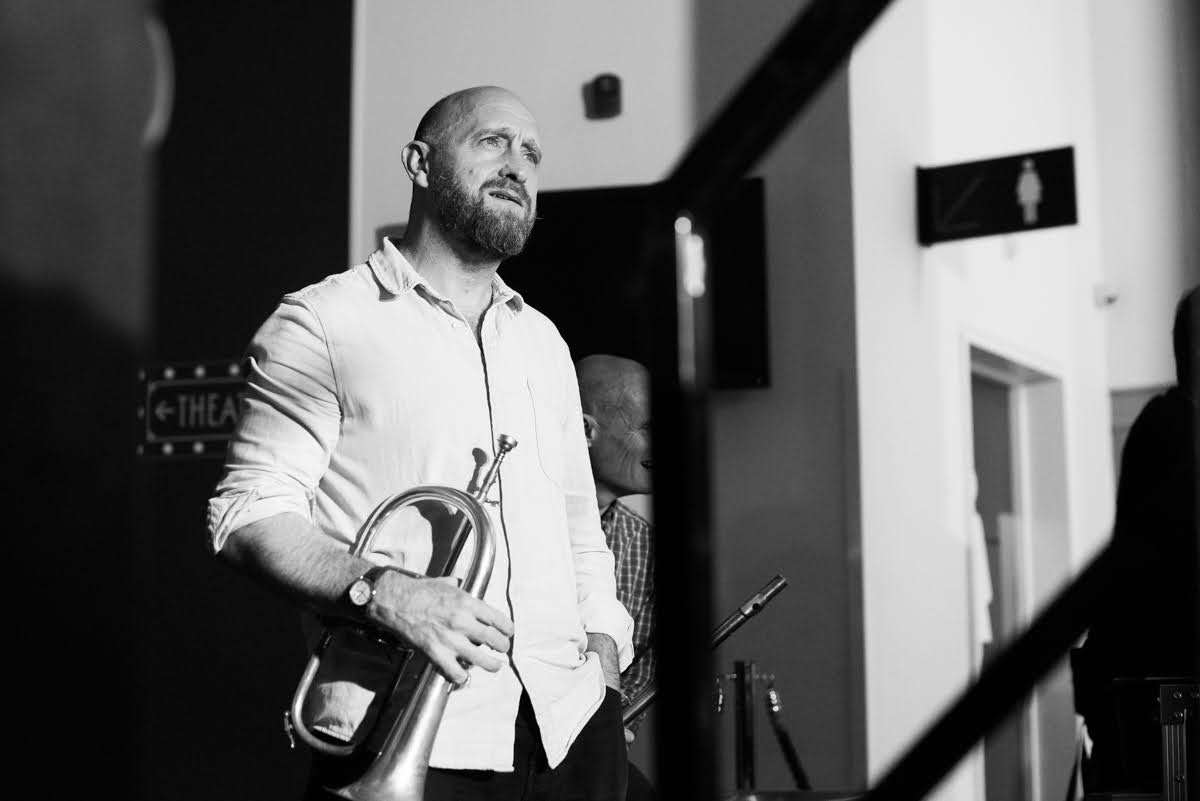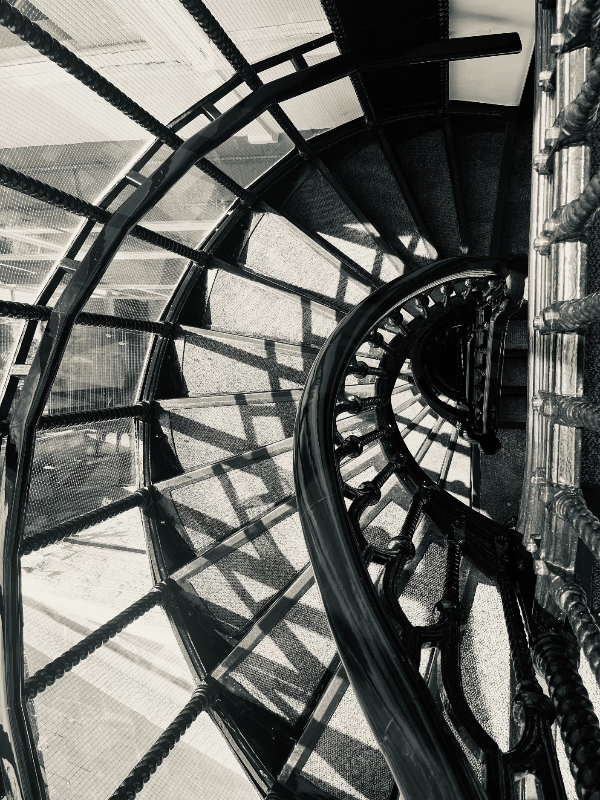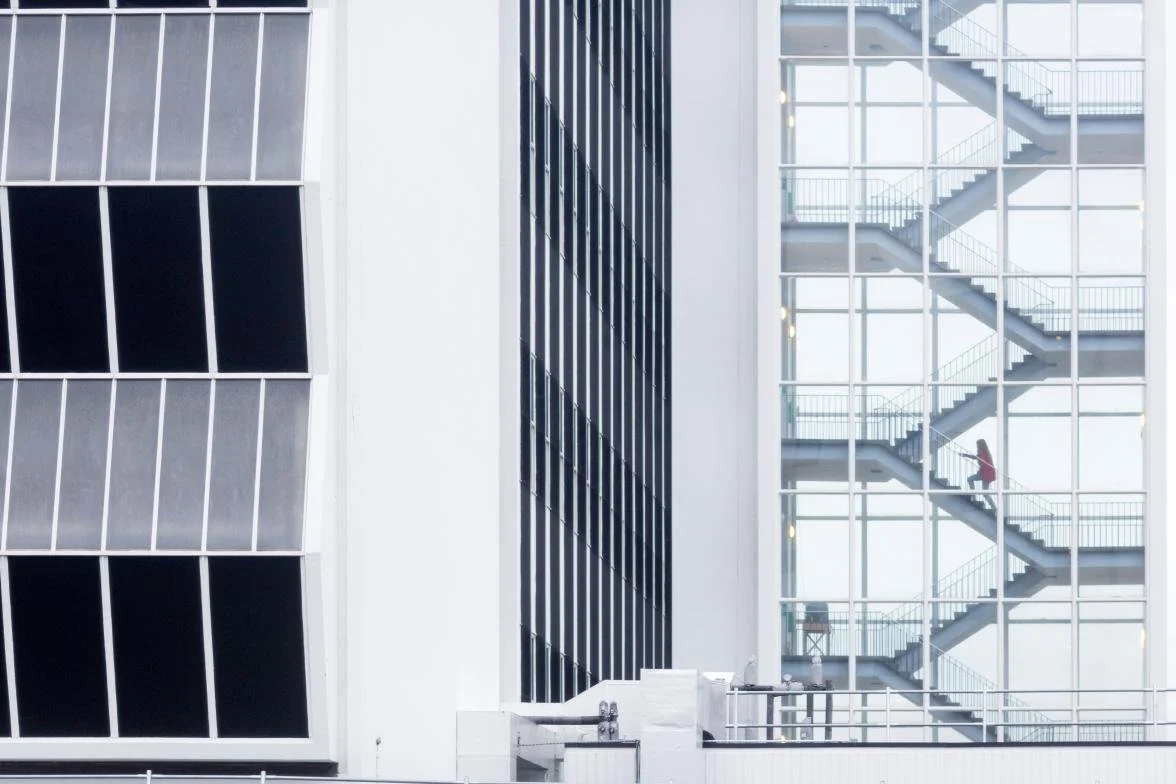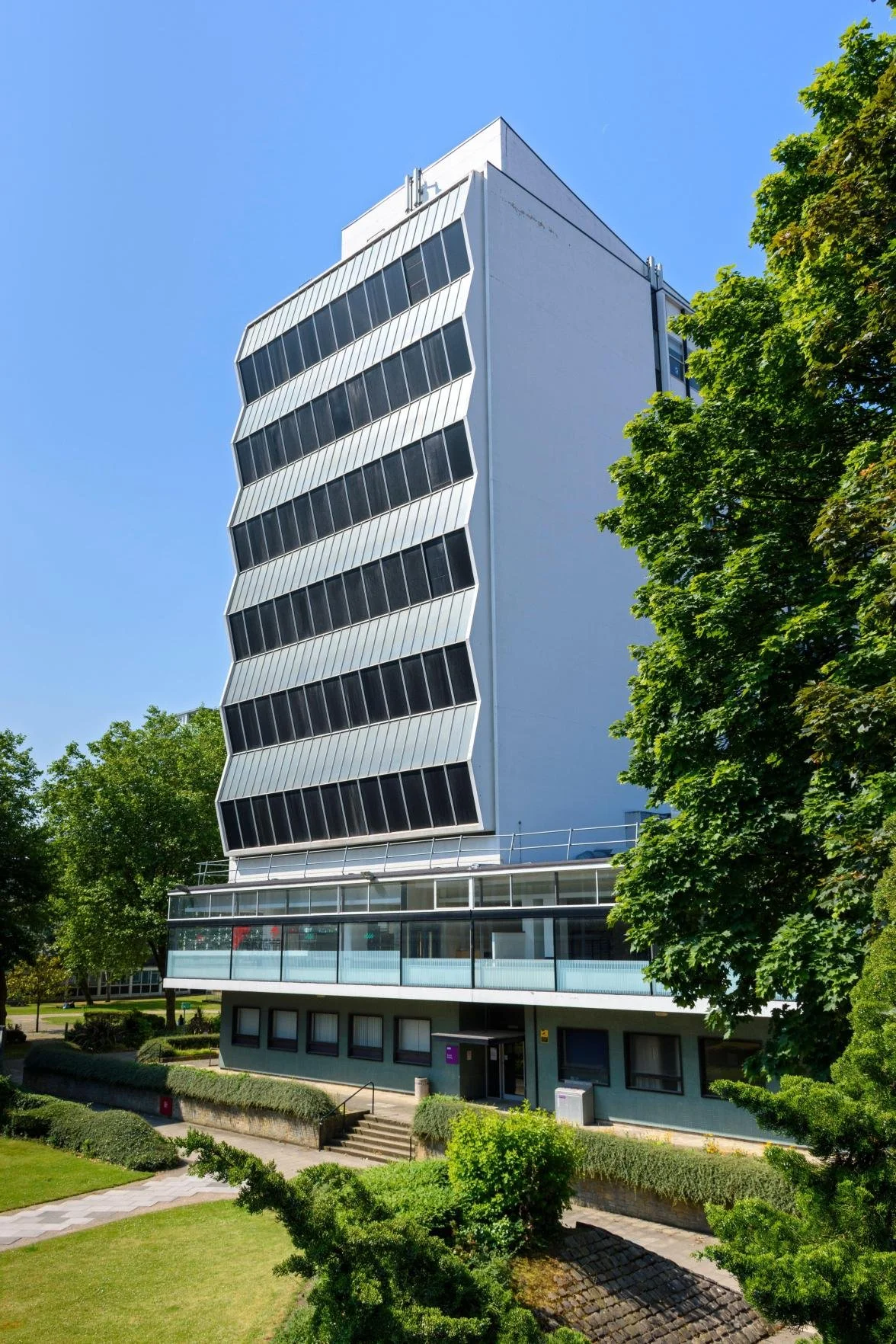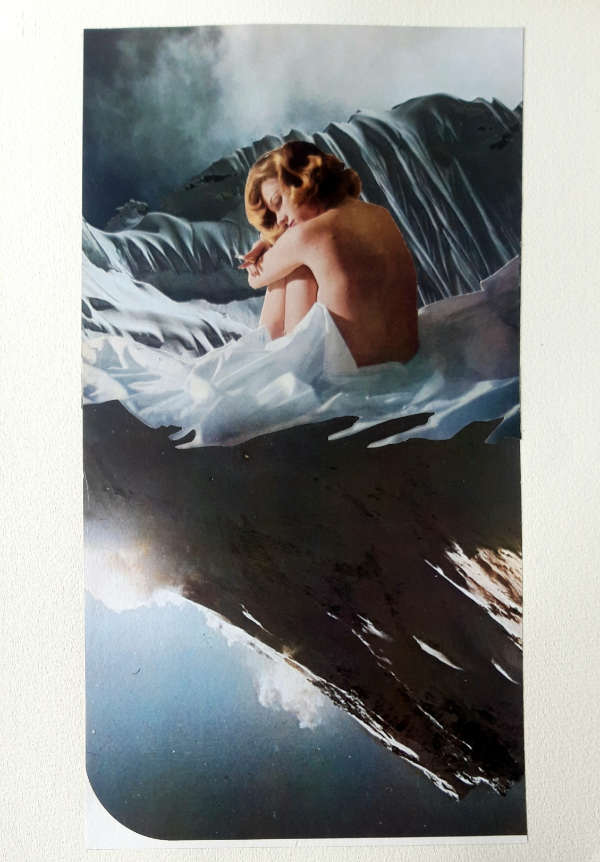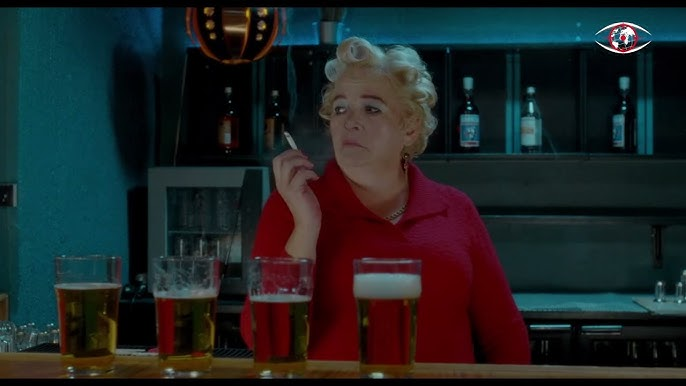Science & Magic | 6
I’ve been thinking about the precise moment you get branded 'a bit weird.' For me, there were several key pieces of evidence presented by my family during my formative years.
Exhibit A: the time I went into town with my birthday money to buy The Police’s 'Every Little Thing She Does Is Magic' and returned instead with the eight-minute, vocoder-led existential questioning of Laurie Anderson's 'O Superman.' My brother listened to it for thirty seconds before declaring I’d been scammed.
Exhibit B came around age eleven, when, during a family gathering, I was found absorbed not by a comic, but by Italo Calvino’s Cosmicomics. I remember trying to explain a story told from the perspective of the last dinosaur to my auntie, who responded by patting my head and quietly suggesting to my mother that I might need my eyes tested.
Exhibit C was my unwavering childhood conviction that the best film ever made was Hal Ashby’s Harold and Maude, a dark comedy about a death-obsessed teenager who falls in love with an eighty-year-old woman.
And underpinning all of it was a quiet, stubbornly held viewpoint that things like race and sexuality just weren't a big deal - a simple 'live and let live' philosophy that, in the context of the time and place, was apparently the oddest thing of all.
The label stuck. But so did the feeling that came with it - that quiet, thrilling sense of having discovered a secret language, a different way of seeing the world that didn't quite align with everyone else's. It felt good.
This edition of Science and Magic is a collection of dispatches from those who share a sensibility. We have a ten-question expedition into the mind of trumpeter Martin Smith, whose own life swerved from a career in tennis to the very heart of Liverpool's music scene. Jeff Young takes us through the secret portals of Liverpool. Ian Salmon offers a definitive, decade-long appreciation of Professor Yaffle.
Meanwhile, Angie Woolf sends a dispatch from the "deep sea trench of a duvet," charting her recovery with the light from a 24-hour shipping forecast. Eimear Kavanagh returns from a pilgrimage to her former hometown with sketches of its 'emotional residue,' and Maya Chen continues her vital lexicography of Gen Alpha slang, this week dissecting the disappointed sigh of 'Bruh.' Finally, Tom Roberts makes a compelling case for the deadpan genius of Finnish filmmaker Aki Kaurismäki.
These are field notes from the spaces in between. We hope they find you in an unexpected moment.
Matt
Ten Questions
with Martin Smith
Martin Smith’s musical journey began with a sudden rearrangement. He was seventeen when he saw the 'incredibly charismatic and eccentric' jazz player Digby Fairweather, and from that moment, as he puts it, "the demon music got my soul.' This early conversion set the course for a life lived at the very heart of Liverpool's music scene.
As a trumpet player, his sound has become a kind of secret ingredient within the city's most beloved music. He is the man behind the killer horn line on Shack's live favourite 'Meant To Be' and has been an essential ingredient to Michael Head & The Red Elastic Band, alongside recording credits that read like a who's who of modern British music, including The Coral and Super Furry Animals.
When not lending his talents to others, Martin is a Teaching Fellow at LIPA, guiding the next generation of musicians. He has also toured Europe with Frank Zappa tribute band The Muffin Men and New Orleans street band The BrassHoppers. He moves between genres with the quiet confidence of a master craftsman. His main focus remains his own brilliant outfit, The Weave, whose new album featuring the track 'Maggie Times' is available now via his website.
● What music makes you feel at home when you're not?
Shack, most strongly Here’s Tom With The Weather because it was my introduction to their music when I recorded the trumpet on 'Meant To Be'.
● What's your favourite sound that isn't music?
Tennis balls being hit. I was a tennis nut as a kid and was all set to be a tennis coach before the demon music got my soul.
● What album would you press into the hands of an 18-year-old today, insisting they listen to it front-to-back right now?
Hot House Flowers by Wynton Marsalis.
● If you could time-travel to witness one musical moment in history, when/where would you go?
Simon & Garfunkel live in Central Park in 1981.
● What music did your parents play that you initially rejected but later embraced?
Bob Dylan. My step dad was a massive fan and saw him several times in his heyday. He played him all the time at home and I couldn’t hear anything but the weird strained groaning vocal…I just didn’t get it. Years later I heard a lyric that landed on me. From then the whole thing changed and I love him now.
● Which musician from Liverpool deserves to be huge but isn’t?
Rachael Jean Harris.
● Who’s the person who gives you the best music tips today?
The daughter of one of my best friends. She’s 16 years old but she’s an old soul and has such a deep and wide knowledge of music from the twenties right through to now. Always playing me songs I’ve never heard that knock me out.
● Which person most shaped your musical taste before you turned 18, and what specific record or gig did they introduce you to that changed everything?
My step dad. He had a huge and very varied record collection so when I got the bug and started investigating for myself there was so much available to me. He gave me Sgt. Pepper's... when I was 16 which was definitely a seminal moment.
● What's your favourite song that is from a soundtrack to a film?
'Everbody’s Talkin'' from Midnight Cowboy by Harry Nilsson.
● What song should be the new national anthem?
'New Boots and Panties!!' - Ian Dury.
Photograph by John Johnson
Magnetic North
by Jeff Young
6 : The Spiral
Climb the staircase slowly, up towards the sky, upwards through architecture as dream-vision, as steampunk contraption. 16 Cook Street, one of Peter Ellis’s two visionary gifts to the city is architecture as geometry or anatomy, its spiraling spinal column exposed to sunlight through glass, shadows multiplying the vision, a skeleton of shadow, light and iron. On this Friday afternoon I feel like I’m inside the body of an enormous insect, climbing up its bones.
In my memoir Ghost Town I write:
“And through that doorway, rising from floor to rooftop, there is a spiral staircase of such breathtaking audacity that sometimes I climb the stairs just for the joy of it. It’s like climbing into a cabinet of wonders or discovering a secret world inside a gigantic grandfather clock.”
Sometimes I come here to experience levitation.
At the top of the spiral, my daughter and I look out across the rooftops of North John Street, over Mathew Street and beyond. From this perspective, for the most part, the city looks much the way it would have looked when Number 16 was built in 1866. Grey slates and chimney stacks, terracotta Victoriana, barely a glimpse of composite cladding, no property portfolio blight to disrupt the sense that we are travelling back in time. The building is an intricate puzzle. Bring visitors here and they will gasp with delight at the playfulness of pattern and bewilderment, of vertigo and invention. And for conjuring architectural magic Peter Ellis was damned...
As clouds roll across the early August blue, we turn back to the spiral and look down into the ventricle space between the twisting spine, into the dizzying hollow. Shadows move across ironwork and the building appears to breath, its cavities expanding and contracting. It occurs to me in this time-slip of a place that we could disappear if we hold our breath. I am standing with my daughter at the top of this strange dream-space, and no one knows we’re here.
What would it take to slip the bonds of here and now and step into the imaginary city? Sometimes all you need to do is climb the spiral stairs.
— Jeff Young, 4 August 2025
—
Jeff Young maps Liverpool's hidden geographies with a poet's eye and a playwright's ear, unearthing the mythic in the mundane spaces of his city's memory. His work is read and felt. He guides us through a Liverpool that is both recognisable and utterly uncanny, a landscape of dreamlike portals where you can, as he writes, "fall into a memory through the rain on a wet pavement."
As the current holder of the prestigious TLS Ackerley Prize for his memoir, Wild Twin, Jeff's prose has been rightly celebrated for its "plangent beauty," a haunting and powerful instrument.
For those wishing to see the raw materials of this magic, Haunted Paper, an exhibition of his collages and notebooks, opened at Dorothy in the Baltic Triangle on Wednesday 6 August and will be on view for the next five weeks.
And each fortnight, Jeff will continue to lead us through his shadowlands of memory and place.
A Map of Everton Brow, Your Life and Everything Beyond
By Ian Salmon
The first thing you need to know is this: I have history with Professor Yaffle. I’ve loved the band for a long time. A decade now, nearly. 12th of December 2015; I can date it exactly and I know why. We’ll come to this.
I think I can safely call half of the band friends of mine; the other half are lovely as well but I don’t know them as well as the first half. I know the band, but I’m a fan. I got to know the band after I became a fan. Which may imply some level of bias in my reaction to their work. It doesn’t matter, the reaction is still the reaction, it’s still honest, it’s still mine, it’s what I have to share with you.
Friends had told me to listen to them, Simon, Kelly, both telling me, 'You have to listen to Professor Yaffle, you’ll love them.' And I trusted them but didn’t quite get round to it. Until 12th December 2015, the night this wonderful group supported Michael Head & The Red Elastic Band at the magnificent Florrie. I was blown away. The sound I didn’t know I was looking for. Dreamy, spacey, hypnotic, a sound to bathe in.
And I was in.
And I remained in. Through four albums and numerous live nights. I’ve seen Yaffle play in churches and breweries, made them my first night out post-lockdown, a night that made sense of the world and brought some joy back in. And introduced new material.
I’ve reviewed them, compared them to ‘a funky Pink Floyd playing the songs of Crosby Stills and Nash’ (or Crosby, Stills and Nash playing the songs of Pink Floyd with a funk edge - one of the two, either works). I’ve used their song ‘Cosmic Lullaby’ to soundtrack a couple of events: the premiere of the concert film Michael Head & The Red Elastic Band In A Wonderful Place where it sat next to Joni Mitchell and my play A Brief Conversation About The Inevitability Of Love, where it shared air time with Tom Waits and John Cale and Prefab Sprout. It stood its own in the best company, everything they’ve ever recorded holds its own against the best.
And I’ve said a million times, ‘This is probably the best thing they’ve ever done’.
Everyone Wants To Dream is probably the best thing they’ve ever done. It’s as simple as that. And obviously much more involved. If you already know Yaffle you know what to expect. Kind of. This is that plus more. This takes everything they’ve done to date and adds to it, refines it, colours it, plays with the sound, looks at it from a different angle, finds new paths to the waterfall, as Raymond Carver would have it, uncovers new depths and fills them with space and air and time to sit back and consider everything in front of you.
The sound you love is there, stretching out, relaxing, becoming more urgent, welcoming in horns and strings and is that an oboe? There’s definitely a flute in there. Maybe a mellotron? There’s a moment that sounds like Rick Wakeman in the most positive way. There’s the greatest use you’ll ever hear of a 1970s ITV ident sting. And a slight taste of the acoustic lightness of Led Zeppelin III. There’s a paradox, everything stretches out and sharpens focus at the same time. It’s concentrated Yaffle, packed into 40 minutes, two sides of vinyl, classic, the way they all used to do it. It’s 1971 and it’s thoroughly now.
If you don’t already know Professor Yaffle? All of the above but it’ll be your first time experiencing it all. How lucky are you about to become.
It’s telling a story; a story of place and time. The place is Everton Brow, it returns to Everton brow in three of the eight songs, it’s the psychogeography of Liverpool, it’s sitting at the highest point in town, looking down at the city, the river, the Wirral, Wales, the snow covered mountains in the distance, your life. The time is our age. The age we are. The time when your kids have grown up, you’ve got all this life that you’ve lived and you’re working out what to do with the next bit, knowing how lucky you are that there’s a next bit to think about.
And it’s about love. Love is in every groove of this record. It’s sad and beautiful and uplifting and dreamy and spacious and delicate and graceful and confident and every single note matters.
It’s probably the best thing they’ve ever done. Said it once before but it bears repeating. I’ve had a week living with this album, I’m going to be living with it for a long time. Coming back to it, finding new moments. You’re going to be living with it for a long time too. It contains at least three of the best songs the band have ever written. I won’t tell you which ones I think they are, you might choose three others.
Would it be cliched to end by saying the important thing about this album, one of the important things about this album is that it knows that Everyone Wants To Dream?
Too late, I’ve done it.
Definitive.
—
Ian Salmon is a playwright and author who came to writing late, following a long and distinguished career at the HMV on Church Street, a tenure which made him an unwitting custodian of Liverpool's collective musical taste for two decades. Born in Bootle, he now uses the stage to excavate the city's heart, writing with an emotional depth that captures the specific textures of working-class life. His award-winning plays, like the celebrated Girls Don’t Play Guitars, are less works of fiction and more acts of collective memory, transcribed with honesty and wit. He writes about Liverpool FC with the same passion he applies to his theatre work, understanding that in this city, football and art are just different languages for telling the same essential stories.
On Seeing Ghosts in White Concrete
by Matt Lockett
I spent a significant portion of my youth actively avoiding buildings like the Renold Building in Manchester. As a student, they felt less like a place of learning and more like a giant, concrete filing cabinet where dreams went to be indexed and forgotten. Just another part of the landscape - a stoic, modernist slab you walked past on your way to somewhere more interesting.
You simply don’t notice these things until someone threatens to knock them down. And so, after a twenty-year battle waged by people far more patient and architecturally literate than I am, the Renold Building has finally been awarded Grade II listed status. It has been officially recognised as Important. This is, of course, wonderful news. It is a victory for the preservationists, for the families of the architects, and for anyone who believes that Manchester's soul is written as much in post-war concrete as it is in Victorian brick and sky blue football shirts.
But, for me, the quiet magic of this decision is not that it saves a building. It's that it forces you to actually see it properly for the first time.
Suddenly it’s not just this slab anymore. It’s a 'tower and podium configuration' with elegant 'birds-mouth beams' - a cousin to Sheffield's elegant Arts Tower. That weird zig-zag facade isn't an accident; it's a deliberate, sculptural choice offering backlighting to stacked lecture theatres. That odd curve on the roof? Apparently a direct nod to Oscar Niemeyer's Brasília. The whole thing was conceived as the centrepiece of something called a 'campus' - a word so novel in 1950s Britain that its use here was tantamount to science fiction.
When you read the history and the building itself starts to shimmer, reconfiguring before your eyes. You realise you’ve been walking past a ghost all these years without ever knowing its name. This was a statement of intent, a manifestation of a future that its creators, Gibbon and Hodkinson, genuinely believed in. One of pride and Cold War technological supremacy.
The irony, of course, is that while this one building is saved, the rest of the campus is being systematically dismantled for another £1.7 billion 'innovation district.' Certificates of Immunity have been granted, paving the way for the destruction of almost everything else. The beautiful, sculptural Hollaway Wall that buffers the site from the Mancunian Way is itself facing partial demolition.
And so, we are left with a single, stoic survivor from a battle everyone else has conceded. A strange, partial victory. But perhaps that’s the most Manchester thing of all. We give the lone soldier a medal and build a small monument to their stubbornness. The listing doesn't just preserve a building, it honours the quiet persistence of an idea, forcing you to look up from the pavement, to salute its survival, and to finally acknowledge the ghost of the future it once promised.
Where Does Guilt Show Up?
by Eimear Kavanagh
Guilt resides heavily in the heart and permeates through the chamber walls, ascending upon my shoulders.
We must be sure to work with our animal allies and sacred deities!
Love, Eimear
—
Eimear Kavanagh, who typically corresponds with us from a small studio near The North Sea, recently made a rare pilgrimage back to her former hometown of Liverpool. She spent the days not visiting landmarks, but documenting what she calls 'the city's emotional residue' - the faint, spectral smell of bubblegum from 1987 that still clings to certain postboxes, the precise vibration of a memory being formed in a passing tourist, and the specific shade of regret found only in the windows of closed-down pubs. She returned with no photographs, only a series of seven charcoal sketches of empty spaces where she claims "the memories were loudest." New work to be created upon her return will be Eimear's attempt to translate the peculiar, beautiful dissonance of being both a stranger and a native in the same place at the same time.
The Gen Alpha Lexicography
by Maya Chen
04: 'Bruh'
Etymology: Evolution of "bro," popularised via memes and social media circa 2010-present
Gen Alpha: born after 2013, raised with AI assistants as conversation partners and tablets as pacifiers.
My 9-year-old daughter Lily has perfected the art of expressing complete existential disappointment in a single syllable. Yesterday, when I told her we were out of her favourite cereal, she looked at me with the weariness of someone who'd witnessed humanity's greatest failures and simply said: 'Bruh.' Not 'oh no' or 'that's annoying' - just 'bruh,' delivered with the tone of someone who expected nothing and was still let down.
'Bruh' is Gen Alpha's Swiss Army knife of disappointment, inherited from previous generations but weaponised into maximum emotional efficiency. It's not anger - it's resigned disbelief at life's persistent mediocrity. When my son says 'bruh' after I suggest family board game night, he's not being rude - he's expressing gentle despair at my continued failure to understand his existence. The word serves as commentary on adult incompetence: 'Bruh' when I can't find the car keys, 'bruh' when I suggest vegetables, 'bruh' when I don't immediately understand their TikTok references. It's simultaneously dismissive and affectionate, like being gently pitied by someone who still loves you despite your obvious limitations. They've distilled complex disappointment into one syllable that somehow conveys both 'I expected better' and 'but I'm not surprised.'
Next week: "Ohio" - When my state becomes an adjective for chaos
—
Maya Chen is a professional eavesdropper masquerading as a mother. Officially, she holds a PhD in Sociolinguistics and writes cultural commentary. Unofficially, she spends her days pretending to load the dishwasher while secretly documenting the linguistic innovations happening three feet away at the kitchen table. Her children, aged 9 and 10, serve as unwitting test subjects in humanity's greatest experiment: what happens when you give iPads to toddlers and expect coherent communication to emerge. Her children remain unaware that their casual conversations are being analysed for broader cultural significance. They assume she simply doesn't understand modern life, which is both completely accurate and entirely beside the point. Chen operates under the working hypothesis that every generation believes they invented irony while simultaneously taking everything far too seriously.
La Violette Società 58
The launch next La Violette Società event is almost ready, the usual world will again suspend itself as Granfalloon, 6FA Maisie, Beatnik Hurricane and Plazzy Bag hit the stage on Tuesday 30 September at Ten Streets Social in Liverpool.
Click the image below to get yourself and a mate a sneaky early ticket.
Let Love Be Your Lighthouse
by Ange Woolf
When the void appears
Absorbing all
Electric light
Blotting out
The sun
Pale and weak
Covered with vantablack
Nothing darker
In this world
As you stumble blindly
Screaming silently
Pushed under
Unable to touch
The surface
Collapsing
Under your own flesh
Human resources
A uesless commodity
In this new dark world
If you find yourself
Blind to each other
No way out
Go in
Look for the distant light
Heart shaped
on the horizon
Showing you the way
An unstoppable strength
A forcethereof
Guiding you
Through darkness
Until night becomes day
And as yellow fills your world
And you regain your sight
Find your feet
Surrounded by light
Let now be your prayer
The past renounce
Trust your own power
Let love be your lighthouse.
—
Angie Woolf, who we can report has been recently navigating a period of quiet uncomplaining convalescence, sent this dispatch from what she describes as 'the deep sea trench of a duvet.' This new poem, 'Let Love Be Your Lighthouse,' was apparently composed during a fever dream in which she was appointed the sole lighthouse keeper for the psychic storms of the entire L4 postcode. In our recent correspondence, she revealed she is charting her recovery using only the light from her television, which is permanently tuned to a 24-hour shipping forecast. She claims this method provides 'a less sentimental map for finding one's way back to shore.'
Aki Kaurismäki
by Tom Roberts
You might be surprised to hear this but I don't consider myself an aficionado of Finnish cinema.
To be honest I don't consider myself an aficionado of any cinema.
But the films of Aki Kaurismäki resonate with me in a way no other filmmaker's work does.
I think it was Fallen Leaves that kept appearing on my socials or in some Amazon ‘you might like this too’ recommendation.
You know how it works these days.
I don't get out as much as I used to and Channel 4 doesn’t show these kinds of movies anymore.
Maybe it was Letterboxd…
Yeah, it was definitely Letterboxd.
No, wait, it was a friend.
Yes, a cool friend…
And it was The Man Without a Past… no, Shadows in Paradise or The Match Factory Girl.
Yeah, The Match Factory Girl… and it was at FACT or maybe the old 051 on Mount Pleasant.
Ha… yeah right, anyway.
His films don't shy away from hardship, poverty or loneliness but they never wallow in them either.
They exist on their own terms.
There's always humanity, moments of the everyday absurd and a jukebox playing a sad love song in a near-empty bar that no one asked for but everybody needed to hear.
He captures dignity in quiet despair that never feels performative or over-stylised. Just true.
Kaurismäki finds the beauty in the bleak:
The intimacy of a first-date kiss on the cheek
A woman wearing red in the glare of a neon sign
Carnations in a liminal light
The loyal companionship of a mongrel dog
A rare record found in a dump truck
His stories unfold in silences, in cigarettes, in tinny rock 'n' roll and karaoke.
In two people sharing soup without saying a word...and flowers.
Always flowers.
There's always something that points to a better world, no matter how small.
Something that stands up to the bigger injustices.
And humour. Deadpan humour.
It's a social realism but the kind that can influence films by Wes Anderson or Jim Jarmusch.
Sort of like a Finnish minimalist Jarvis Cocker but for cinema.
A lo-fi poet of subtle emotion, humour and working-class lives presented on a silver screen.
It's a magic realism with an inherent wonder in the otherwise ordinary.
I don't know if this sounds like nonsense but if you're looking to reconnect with what makes us special, with something that celebrates and explores the personal within the universal, you might just find it in the films of Aki Kaurismäki.
—
Tom Roberts, a songwriter and lifelong Everton supporter, believes that the highest form of art is deadpan humour delivered with absolute sincerity. His cultural recommendations are sourced from what he describes as 'atmospheric resonance' - a process where he claims to feel the 'quiet despair' of a film before he's ever seen it. He is drawn to stories of small, defiant gestures, like buying flowers in a bleak landscape or finding a rare record in a skip. He insists that his recent, intense focus on the films of Aki Kaurismäki has gifted him the ability to telekinetically silence people who talk during quiet moments, an assertion that remains, for now, unproven but deeply compelling.
Gravity’s Gentle Argument
1. Crescent - 'New Leaves'
2. Burial - 'Come Down to Us'
3. Jesca Hoop, Guy Garvey - 'Murder Of Birds (Undressed)'
4. Julian Lage - 'Hymnal'
5. Alice Boyd, The RSPB - 'Return of the White-Tailed Eagle'
6. Tyler Ballgame - 'Help Me Out'
7. Nation of Language - 'Inept Apollo'
8. Etta James - 'Waiting For Charlie (To Come Home)'
9. The Bad Plus - 'Flim'
10. U.N.P.O.C. - 'See You Later'
A Call For Correspondence
We believe that the most interesting work often exists in the quiet spaces, in the margins of notebooks, as unlabelled audio files, in rolls of undeveloped film. It is a private language waiting for a public conversation.
This newsletter is an attempt to build a home for that work.
We are seeking submissions from those who document the world through unconventional means. If your work explores the textures overlooked, the music of the mundane, or the geography of memory, we invite you to share your findings. We are less interested in polished artefacts and more in honest, resonant dispatches from your particular corner of the universe.
If you have something you believe belongs here, please direct a sample, along with a brief personal history, to matt@violetterecords.com. All submissions are reviewed with genuine curiosity and respect.
Where You Going Now?
Martin Smith
Check out Marty's band's "The Weave" website and buy their new album :
https://www.theweavemusic.com/
Jeff Young
Go see Jeff's 'Haunted Paper' exhibition of his collages at Dorothy in Liverpool :
https://www.thedoublenegative.co.uk/2025/08/sacred-profane-haunted-paper/
Dorothy : https://www.wearedorothy.comTreat yourself to a hardback copy of Jeff's latest brilliant book Wild Twin :
https://www.littletoller.co.uk/shop/books/little-toller/wild-twin-by-jeff-young/Celebrate Jeff's new award as the winner of the TLS Ackerley Prize 2025 for his memoirWild Twin :
https://www.jrackerley.com/the-ackerley-prize
Renold Building
More about it, and it's re-development:
https://sistermanchester.com/masterplan
Angie Woolf
Say Yo to Ange here :
https://www.facebook.com/Awordslingingwoolf/
Professor Yaffle
Listen to Professor Yaffle's new single :
https://ditto.fm/everyone-wants-to-dreamPre-Order Professor Yaffle's latest album Everyone Wants To Dream, out in September :
https://www.violetterecords.com/store/p/professor-yaffle-everyone-wants-to-dream
La Violette Società 58
Buy a ticket, or a suspended ticket for someone else :
https://www.violetterecords.com/tickets
Aki Kaurismäki
Violette Records
Keeping us solvent since 2013 :
https://www.violetterecords.com/store
Science & Magic
Back issues :
https://www.violetterecords.com/science-and-magic
Gravity's Gentle Argument
Listen on Spotify :
https://open.spotify.com/playlist/48L645hCqsILUacYfLJVJl?si=b092edc21bb44041


